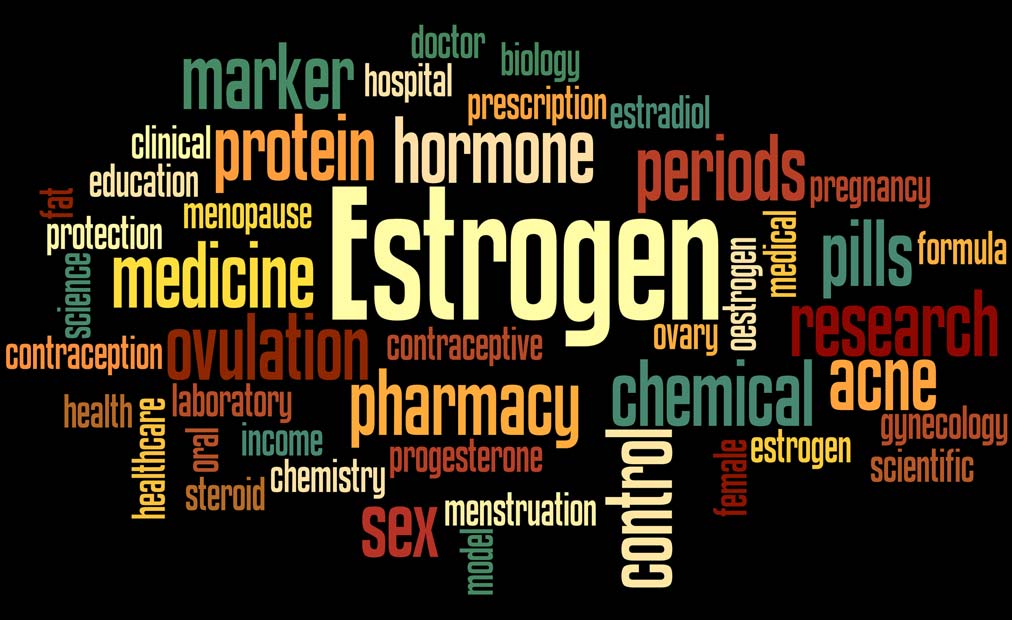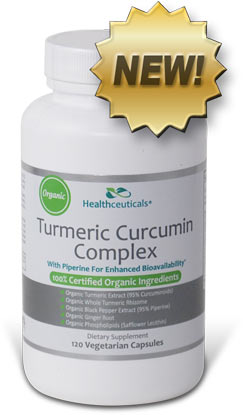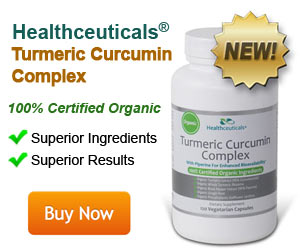The Estrogen Effect and Turmeric

Estrogen is involved in many aspects of female health throughout life, and estrogen imbalances can contribute to health problems. Research suggests turmeric compounds may help regulate and support estrogen hormone levels, both directly and indirectly. (x.1, 20-22)
Estrogen is actually a catch-all term that refers to 3 related hormones: (x.21)
- Estradiol
- Estrone
- Estriol (made in the placenta during pregnancy)
In women, the pituitary gland in the brain sends signals to the ovaries to make estrogen hormone. Estradiol, the most potent form of estrogen, is the type mostly produced from cholesterol in the ovaries. It reversibly converts to estrone with the help of an enzyme. Before menopause estradiol is the most common type of estrogen in the body. (x.21, 23)
Fluctuations in estrogen levels are involved in regulating the menstrual cycle, the onset of menopause, and pregnancy. But did you know estrogen hormones and their metabolites also affect essential nutrient levels, help protect the heart, and are involved in certain cancers? (x.21)
Types of Estrogen and Turmeric Compound Effects
| Estrogen, Form of Estrogen, or its Metabolites | Protects Against | Promotes |
|---|---|---|
Estrogen(overall) |
Free Radical DamageThe loss of estrogen's natural antioxidant protection isn't the only negative effect of the lower levels of estrogen during menopause. Because of the lower production levels of estrogen, the estrogen that is produced is linked to DNA damage and higher levels of inflammatory proteins. (x.23) |
Estrogen DominanceExcess estrogen production (or administration of oral estrogen hormone replacement therapy) has detrimental effects. Some of these are actually the opposite of balanced estrogen benefits, including: (x.24)
It also increases the risk of gallstones and liver dysfunction. (x.24) |
Vaginitis
Postmenopausal women may be at greater risk of infection because of lower estrogen levels. (x.25) |
||
Metabolic Syndrome
|
||
Osteoporosis
These protective benefits are mostly found with estradiol, but estriol also shows some benefit. (x.24) |
||
Aging Brain Function
|
||
Aging Skin |
||
Aging Eyes
|
||
Estradiol(E2, the strongest form of estrogen, and the one that decreases the most with menopause) (x.24) |
Bone and Heart DiseaseEstradiol has more protective effects against osteoporosis and high cholesterol than other forms of estrogen. (x.24) |
EndometriosisUterine lining cells from women with endometriosis have much higher levels of estradiol than normal endometrial cells (which have virtually no estradiol). Studies show these higher estradiol levels promote the development of endometriosis. (x.20) |
Cervical CancerHPV and estradiol promote the oncogenes E6 and E7, which promote growth and proliferation of cervical cancer cells. (x.27) |
||
Turmeric's Curcumin Compounds Could HelpIn separate lab studies, estradiol boosted the growth of HPV-positive cervical cancer cells and endometriosis cells. Curcumin treatment had the following effects: (x.20, 27)
|
||
Estrone(E1, the main form of estrogen made after menopause; manufactured mostly by fat cells) (x.24) |
Breast and Uterine CancersThere are 2 different receptors that estrogen binds to — estrogen receptor-alpha and -beta. The alpha receptor triggers cell proliferation, while the beta receptor decreases it. (x.24) Out of all the main forms of estrogen (E1, E2, and E3) estrone has the strongest preference to bind to the alpha receptor. High levels of estrone promote this cell growth in breast tissue and the uterus, which might increase the risk of these cancers. (x.24) |
|
Turmeric Compound May HelpCurcumin has been shown to be toxic to cancer cells—both estrogen sensitive and hormonally non-sensitive types of breast cancer. The turmeric compound can also inhibit the cancer-causing effects of estrogenic pesticides. (x.28-29) |
||
Estriol(E3, the weakest estrogen; functionally changes and adapts depending on the local environment in the body) (x.24) |
Breast CancerStudies suggest estriol is protective against estrogen-sensitive cancers such as breast cancer. Unlike E1 and E2 estrogens, estriol actually prefers to bind to the beta receptor for estrogen in cells - which means it promotes stopping cell growth. In a clinical study, E3 also brought on remission or stopped tumor spread in over 30% of patients with metastatic breast cancer. (x.24) |
|
Reactive Estrogen Metabolites |
CancerReactive estrogen metabolites are susceptible to destabilizing free radicals. If they are not methylated and taken up by other body cells or excreted, free radicals turn them into toxic, potentially carcinogenic quinone compounds. (x.21) Studies suggest that even without turning into quinones, 4OHE and 16OHE metabolites may be dangerous. Prospective studies involving thousands of women found that a lower ratio of beneficial 2OHE estrogen metabolites to reactive 16OHE estrogen metabolites correlated with significantly higher breast cancer rates. Pesticides, carcinogens, obesity, some medicines, and genetics can all negatively affect this ratio. (x.21) However, researchers note that the 4OHE metabolite is more likely to be harmful to cells. It actually binds tighter to estrogen receptors, and may therefore stimulate more estrogenic activity, than the most potent parent estrogen compound. (x.21) |
|
Compounds in Turmeric Can HelpStudies show compounds in turmeric can help prevent estrogen metabolites from turning into toxic quinones. (x.21) These include: |
||
Beneficial Estrogen Metabolites |
CancerAlthough 2OHE metabolites can also form toxic quinones, it is further metabolized faster than 4OHE estrogen metabolites. Methylated 2OHE estrogen metabolites stimulate apoptosis of abnormal cells and block their proliferation. (x.21) |
|
OsteoporosisGreater amounts of 16OHE to 2OHE estrogen metabolites are associated with higher cancer rates. However, a small amount of 16OHE is also beneficial because it promotes bone health. (x.21, 24) |
Join the 1000s of People Who Are Discovering the Benefits of Turmeric.

Healthceuticals® Turmeric Curcumin Complex
100% Certified
Organic ingredients
- Organic Turmeric Extract - standardized to 95% curcuminoids.
- Organic Whole Turmeric - provides full spectrum antioxidant, anti-inflammatory turmeric benefits, including turmerones and numerous vitamins, minerals, and phytonutrients
- Organic Black Pepper Extract - standardized to 95% piperine; dramatically enhances bioavailablity.
- Organic Phospholipids - markedly improve absorption.
- Organic Ginger - works synergistically with turmeric to provide more powerful benefits.
- Absolutely FREE of potentially harmful additives and fillers such as magnesium stearate.



